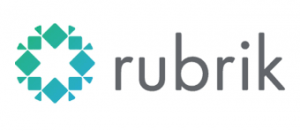A June Government Accountability Office (GAO) report revealed that 10 of the most critical federal agencies spend $337 million every year supporting aging IT systems. Ranging from eight to 51 years old, the outdated infrastructure has become a sore spot for agencies as IT modernization projects become the new hot topic.
But as these agencies promise to upgrade their legacy infrastructure, what does IT modernization really mean beyond the buzzword?
“IT modernization is really the integration of newer, updated technology into all aspects [of an organization],” said Rebecca Fitzhugh, Principal Technologist at cloud data management company Rubrik. “It’s a continuous change that requires organizations to really challenge the status quo.”
Although challenging the legacy status quo is a large task to tackle, there are small changes agencies can make to begin their journey. Relying on good data and cloud-based platforms can increase efficiency and, eventually, set agencies up for success with more advanced initiatives such as automation.
At GovLoop’s Thursday online training, “Are Automation and Cloud the Secret Sauce of Modernization?,” Fitzhugh and Chief Enterprise Architect at the Federal Transit Administration (FTA) Edward Dowgiallo discussed the value of good data and cloud strategies in the journey toward modernization.
In the case of FTA, Dowgiallo elaborated, the team prioritized data modernization because they saw the value in breaking down silos to introduce future transformation projects.
“We had all these individual systems that existed…and they had data that was relevant to each other, but the data would be pulled out and dealt with in an offline mode,” said Dowgiallo. “We knew we wanted to modernize.”
A simplified management process that capitalized on data’s value allowed FTA to maximize its current service delivery model and internal communication processes.
Once agencies find a way to harness their data, cloud can be the foundation for a collaborative knowledge space that enables employees to use data effectively and continue a modernization journey. For many organizations, this requires a hybrid cloud approach because there are various cloud providers with different specialties.
Dowgiallo explained that a multi-cloud system can support Infrastructure-as-a-Service, Platform-as-a-Service and Software-as-a-Service offerings at large organizations.
“There’s a bunch of different types of cloud offerings that you can take on,” Dowgiallo said. “When you start thinking about what is the right one for most enterprises of a couple thousand people, [it’s multiple clouds] stitched together.”
That said, IT modernization is not a one-size-fits-all journey. Allowing a space for comments from staff about department priorities and what needs improvement can help IT leaders pave the right path ahead for modernization.
“Monitor for necessary pivot points and work on the next plan but have [a] closed feedback loop,” Fitzhugh said. “That’s a really solid model for remaining agile.”





This sounds like a very useful online training–I’ll have to check out the on-demand version!